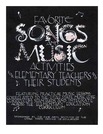
This resource includes the sheet music, activity instructions, and audio files for "Apples and Bananas" from the Elementary Songbook.
- Subject:
- Arts and Humanities
- Music
- Material Type:
- Activity/Lab
- Author:
- Leslie
- Date Added:
- 01/31/2024

This resource includes the sheet music, activity instructions, and audio files for "Apples and Bananas" from the Elementary Songbook.

This resource is a free, downloadable audio file of short music clips to use for instruction.

An introduction to how AI is applied in daily life and across industries, including aspects of AI such as NLG and speech recognition. This module is part of the AI Foundations: Imagine Cup Juniors learning path.
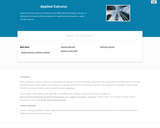
Applied Calculus instructs students in the differential and integral calculus of elementary functions with an emphasis on applications to business, social and life science. Different from a traditional calculus course for engineering, science and math majors, this course does not use trigonometry, nor does it focus on mathematical proofs as an instructional method.
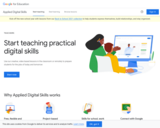
Teach students using engaging lessons with blend technology tools with content area knowledge.

This is a lesson plan created for Earth Day using an Applied Digital Skills lesson. After providing students with background on Earth Day, students will take charge of their learning by following the lesson to explore a topic centered around Earth Day. Students will be creating a presentation using a Google Application and will share the presentation with the class.
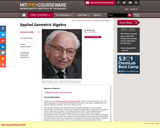
Laszlo Tisza was Professor of Physics Emeritus at MIT, where he began teaching in 1941. This online publication is a reproduction the original lecture notes for the course "Applied Geometric Algebra" taught by Professor Tisza in the Spring of 1976. Over the last 100 years, the mathematical tools employed by physicists have expanded considerably, from differential calculus, vector algebra and geometry, to advanced linear algebra, tensors, Hilbert space, spinors, Group theory and many others. These sophisticated tools provide powerful machinery for describing the physical world, however, their physical interpretation is often not intuitive. These course notes represent Prof. Tisza's attempt at bringing conceptual clarity and unity to the application and interpretation of these advanced mathematical tools. In particular, there is an emphasis on the unifying role that Group theory plays in classical, relativistic, and quantum physics. Prof. Tisza revisits many elementary problems with an advanced treatment in order to help develop the geometrical intuition for the algebraic machinery that may carry over to more advanced problems. The lecture notes came to MIT OpenCourseWare by way of Samuel Gasster, '77 (Course 18), who had taken the course and kept a copy of the lecture notes for his own reference. He dedicated dozens of hours of his own time to convert the typewritten notes into LaTeX files and then publication-ready PDFs. You can read about his motivation for wanting to see these notes published in his Preface below. Professor Tisza kindly gave his permission to make these notes available on MIT OpenCourseWare.

Word Count: 7198
(Note: This resource's metadata has been created automatically by reformatting and/or combining the information that the author initially provided as part of a bulk import process.)

I designed the course for graduate students who use statistics in their research, plan to use statistics, or need to interpret statistical analyses performed by others. The primary audience are graduate students in the environmental sciences, but the course should benefit just about anyone who is in graduate school in the natural sciences. The course is not designed for those who want a simple overview of statistics; well learn by analyzing real data. This course or equivalent is required for UMB Biology and EEOS Ph.D. students. It is a recommended course for several of the intercampus graduate school of marine science program options.

Word Count: 9323
(Note: This resource's metadata has been created automatically by reformatting and/or combining the information that the author initially provided as part of a bulk import process.)
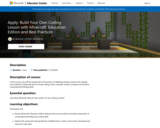
In this course, you will be introduced to the process of adapting existing content and creating new activities in Minecraft which include coding, teach computer science concepts and reinforce computational thinking skills.
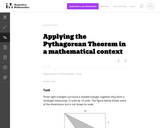
This task requires students to apply the Pythagorean Theorem.

This lesson plan is designed for a classroom of English as a second language (ESL) students. The lesson integrates language arts objectives (language acquisition) with issues of diversity and multicultural identity.

Video resource for approaching Hamlet for English and Theatre Educators

Video resource for approaching Hamlet for English and Theatre Educators

Video resource for approaching Hamlet for English and Theatre Educators

Video resource for approaching Hamlet for English and Theatre Educators

Video resource for approaching Hamlet for English and Theatre Educators

Scene from USF 2019 Production of Hamlet

Scene from USF 2019 Production of Hamlet